As already wrote some days ago, you can freely download the Instant book of the atelier we participated in with Luca Galofaro at ESA, Ecole Speciale d’architecture.
Among other things, the book contains a lot of theoretical material used in the atelier (excerpts from texts by Toni Negri, Michael Hardt, and from essays on Archizoom, Superstudio, Cedric Price), + some texts by us and the projects produced. (All the material reserved to the authors)
Click on the image to download the book.
Following is a our small essay:
ROME: A TALE OF TWO CITIES
MICROCITIES
1.
Rome is today the narrative of two cities. The city of the hystoric space, kept in a crystallized image, object of a kitch resignification by the tourism industry, the monumental and archaeological areas converted into a fertile ground for exploitation by virtue of their own specific suspension, their absence from time.
And the “living city”, on the run from the condition of peripheral capital, looking for the modernization of the communication flows, subject to rapid demographic and social change. The Rome of the flight of the inhabitants from the center, of the jobs in the suburbs, of the vehicular traffic. The city that seems to forget his past, but that hardly reaches modernity.
Therefore, the two cities, two opposed times, live a friction that unfolds in the metastasis of the barriers and the gates around the archaeological sites, by now terrains vagues alienated from the rest of the urbe. The physical line of separation (in all its variants or typologies, from nineteenth-century walls to ivy covered scaffoldage) seems to transcend the role of temporary protection or of regulation of access, to hide -much more subtly- a roman vernacular form of today’s post-ideological politics. A politics that renounces to its very constitutive dimension, in order to convert into good administration of safety and welfare, where “fear” becomes a means for mobilizing masses. It goes without saying that surveillance, protection, barriers become the instruments of implementation of a persuasive campaign based on insecurity.
Locked in a “cage”, the monument now lives a life similar to that of an animal in a natural reserve: protected and apparently safe from civilization, but in fact imprisoned within an island. Inspected by generic tourism which does not speak its language, the monument is unable to “remember”, is dumb. Present with only its physical shell, its meaning is emptied out.

2.
Historical and contemporary space
Yet the dialectic between historical and contemporary space has rhythmically marked the Time of the City.
The Roman territory is the territory of continuity and stratification. Oblivion, reuse, desacralization and re-symbolization are, throughout the Middle Ages, the means by which power addresses and modifies the built geography of the city. The architectures of the past are, first of all, building materials.
We will have to wait long before reaching the current paroxysm of the untouchability of the past, be it universal monument, or neglectable ruin.
If the birth of archeology symbolizes a new awareness of the past as a foundational structure of the present, and thus a territory to preserve up to its reconstruction, the fascist pickaxe founded a new past, instrumentalizing the ruins and turning them into a symbolic legitimization of the upcoming empire.
And when, subsequently, the preservation of the historic centers came back as a central theme of the Italian architectural debate from the post-war years to the 70’s of last century, some of the Italian radical groups reacted ironically, bringing to the extreme consequences the intrinsic conflict in the very idea of preservation and restoration (continuity, conservation or return to a previous state). Thus, the project of restoration of Rome by Superstudio follows a completely linear logics, when it plans to flood the center in its own waste, preserving the ruins from the smog and providing places for future archaeological excavations.

3.
The present: a landscape full of “weak” reappropriations.
Locked in their cages for protection or carelessness, the monuments tend to fade from the concerns of the contemporary city. Yet, as devoid of utopias, the present offers a panorama of dense “weak” reappropriation, in which the dialogue between hystorical space and “living” city is re-woven, but only for a moment. The rediscovery, though ephemeral, occurs in various forms, beginning with artistic interventions outside the places appointed: from the Wrapped Wall (Via Veneto and Villa Borghese) by Christo and Jeanne Claude in 1973/74, to the recent lights installations by Mario Merz in the Roman Forum or by Giancarlo Neri in the Circus Maximus.
These interventions have produced effective linguistic short-circuits by decontextualization, recontextualization, subtraction and re-identification, but the practice shows increasing signs of wear, and it is rapidly becoming a facile cliché.
Among the various attitudes to dialogue, a subtle irony lies in the recovery or in the detournement of the original meaning of the various monumental spaces: if the Coliseum today symbolizes the fight against the death penalty (lights on every time it is abolished in any state in the world), the Circus Maximus is the place for mass celebration of sports’ victories, evoking its primordial nature.
The hystorical space is often the subject of a dual process of political resymbolization : taken as a physical expression of power, the monument is frequently invaded and desacralized, taken as an image of collective cultural tradition, it becomes substantial background, legitimizing the political struggle.
Recent examples of institutionalized reappropriation (concerts or festivals taking place within the monuments) are trying to create a new relationship between city and historical space, but the ephemeral component can not get over the feeling of an “elephant in the room”: the pace of the monuments remains different from the pace of the city.
If the creation of gated communities for temporary residents (tourists) seems to be the only answer to the friction between the monuments and the contemporary Rome, a solution as radical as questionable was suggested by a recent television commercial, in which the city appeared erased, saving only the monuments, while the urban tissue was replaced by country green. Relegated to an archipelago of signs without relationship, the historic space stops talking. An operation that selects pieces of content to the exclusion of expression, can only lead to the death of the language of the city.
In Fellini’s “Rome,” the cars around the Colosseum, the “new” urban actors in the multitude of traffic, lead to a grotesque syncretism of urban feast, the carnival of lights, sounds, events, similar to that of the odd collective dinner at the Festa de Noantri, a few scenes before. The monument is never just background, evidence of a time gone, but it is actor in the tragicomic show of life and city: here then the great night motorcycles’ raids during the long final scene, when they seem to emerge from obscurity to join, in an imaginary line, the spread episodes of the past and of the present.
It seems urgent to redraw that line.
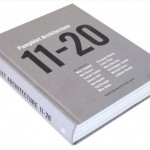
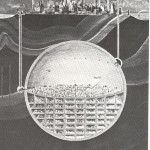
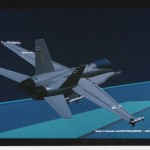
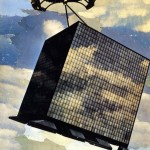
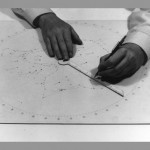
Leave a Reply